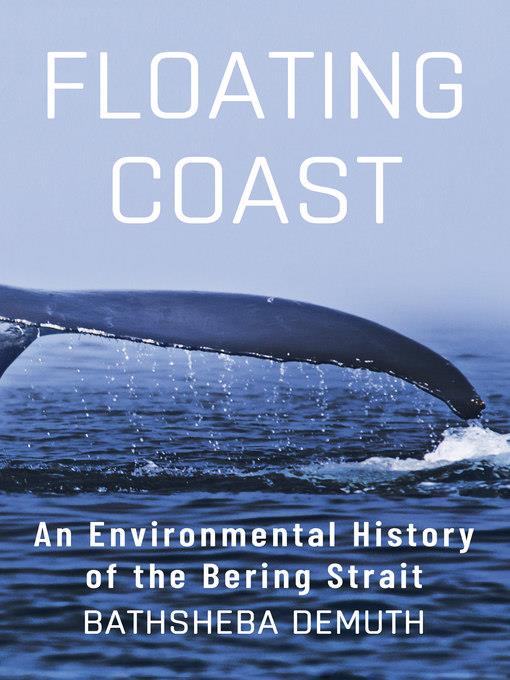
Floating Coast
An Environmental History of the Bering Strait
کتاب های مرتبط
- اطلاعات
- نقد و بررسی
- دیدگاه کاربران
نقد و بررسی

April 8, 2019
In this detailed, sometimes poetic exploration of the Bering Strait, Demuth, an environmental historian at Brown University, reveals the area is not, as people sometimes imagine, a “beautiful but essentially static place... untouched by people.” While tracing the life cycles of wild animals there, including foxes, walruses, and whales, she also moves across the Chukchi and Seward peninsulas in Russia and Alaska, respectively, tracking the lives of their human inhabitants. Throughout, Demuth emphasizes the Bering Strait as a point of intersection between the human and natural worlds. Early chapters, for example, deal with how, in the 19th century, the blubber of bowhead whales “lubricated a mechanizing country: first, greasing sewing machines and clocks, and then the cotton gin and power looms.” Subsequent discussions focus on the Beringian land itself—“too cold for corn, or wheat, or even, in most places, potatoes”—and the reindeer that thrived there. Later sections on how the early 20th-century gold rush in Nome, Alaska, attracted hopefuls from around the world prove equally fascinating. They speak to the complexity of the area in general and to its fascinating legacy, a history Demuth’s authoritative chronicle conveys with both insight and, in an era of climatic peril, urgency. With 18 photos and 7 maps.

Starred review from June 1, 2019
Debut author Demuth (environmental history, Brown Univ.) takes readers through the last two centuries of life in Beringia, a place at the edge of the Arctic Circle, composed of fingers of Russian and Alaskan land that nearly touch across the Bering Strait. Braiding human, animal, and environmental history, the author explores the ways in which the implications of economic ideologies have altered the balance of the natural world in this remote land. Beginning with whaling in the 19th century, both the capitalist cultures of the West and the imperialist, and then socialist cultures of Russia consumed resources to excess. Whether to meet the bottom line or the five-year plan, they adversely impacted the Native peoples, the animals on which those people depended for survival, and the minerals and rock buried in the land. As each energy form was harvested and used, human ideals came up against the limits of nature, leaving devastation behind. The author's deeply informed (she spent several years in Beringia) lyrical telling pulls disparate threads together for a powerful environmental message. VERDICT A cautionary, instructive tale highly recommended for readers with an interest in environmental conservation.--Caren Nichter, Univ. of Tennessee at Martin
Copyright 2019 Library Journal, LLC Used with permission.

A lyrical, deeply learned ecological history of the region where Asia and North America meet. The peoples of Beringia are many, writes Demuth (Environmental History/Brown Univ.), but ultimately, they divide into Natives--the Iñupiaq, Chukchi, Yupik, and so on--and foreigners, who number everyone else. Those foreigners--Russians, British explorers, and Yankee whalers--fundamentally altered the environment of the region in a fairly short time. If, as the author notes, Natives and foreigners alike went in search of whales as a source of sustenance, they did so with different ideas of what to do with their prize. Apparently influenced by students of Howard Odum, Demuth writes of energy flows across the region. "To be alive," she writes, "is to take a place in a chain of conversions." The seas surrounding the Bering Straits are among the most productive ecosystems on the planet, and "human life in Beringia was shaped, in part, by the ways energy moved over the land and through the sea." Many of those ways were purely extractive, as energy sources, from ambergris to oil, were located and taken away, a process against which Native people and some foreigners militated. One of Demuth's great contributions is her exploration of the radical history of labor in the remote regions, a history soon supplanted by corporate capitalism on one shore and the gulag on the other, even as new arrivals concentrated their efforts on "liberating energy." Now, she writes, a new chapter in Beringian history is being composed with climate change, a transformation that led one elder to observe that "foreigners had brought the end of a world to his people a century ago." The far north has inspired a remarkable body of literature, highlighted, in recent years, by Barry Lopez's Arctic Dreams and Lawrence Millman's At the End of the World. Demuth's book, based on years of field research and comprehensive study, easily takes its place alongside them. A superb book, essential reading for students of the once-and-future Arctic.
COPYRIGHT(2019) Kirkus Reviews, ALL RIGHTS RESERVED. (Online Review)

























دیدگاه کاربران